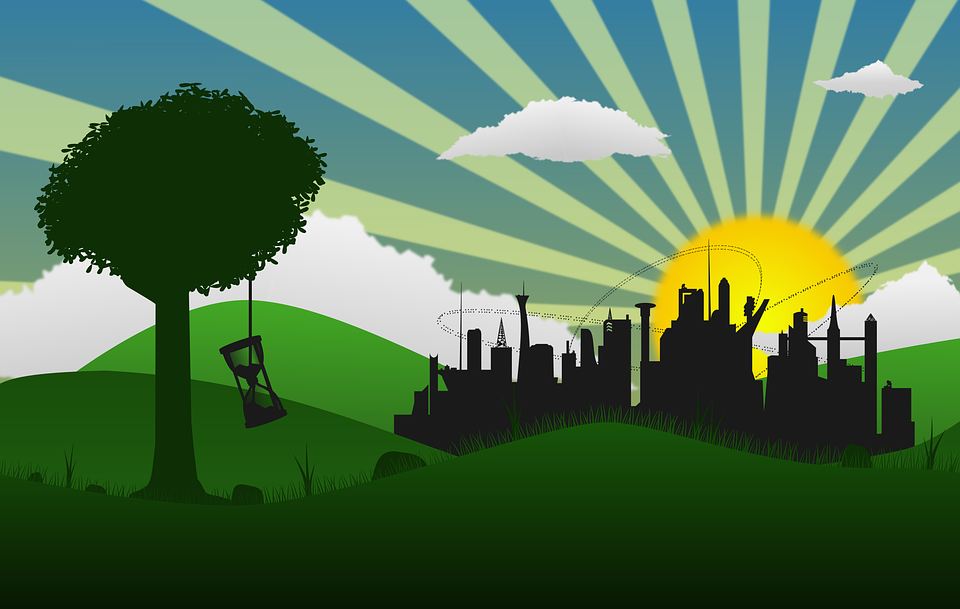Over the past 20 years, economic growth has lifted more than 660 million people out of poverty and increased the income of millions of men and women. Yet this growth is often achieved at the expense of the environment.
Multiple failures – in markets, policies, and institutions – meaning that the exploitation of the Earth’s natural capital is often inefficient and wasteful, that the social costs of resource depletion are not adequately and appropriately addressed, and that the process is not accompanied by reinvestment in other forms of wealth. These failures threaten the sustainability of long-term growth and progress in social welfare. Moreover, despite the benefits of growth, 1.3 billion people lack electricity, 2.6 billion lack sanitation, and 900 million lack access to clean, safe water. In other words, growth has not been sufficiently shared.
Should we grow at any cost, even if it means dealing with the environmental damage later? No, there are other choices for developing countries. Many useful measures can be implemented immediately: not only are clean air, water, and solid waste management among basic needs, but many environmental policies also improve productivity and poverty reduction. If poor countries are to work to meet basic needs and increase opportunities for growth, they must do so in an environmentally sound manner. Moreover, since environmental performance does not automatically increase with income, it must, in all cases, be accompanied by public policy actions. Finally, postponing the resolution of the environmental issue may be impossible or extremely costly, either because the ecological damage will be irreparable, as in the case of biodiversity loss, or because the wait-and-see attitude and the resulting blockages will have made the cost of environmental protection policies and processes, when they are finally implemented, exorbitant.
The future we want to build

When well-designed, green and inclusive growth policies enhance social welfare and take into account the needs of both current and future generations. However, policymakers are also rightly concerned about the potential trade-offs, costs, and co-benefits of green policies for growth and employment in the short term. Careful analysis on a case-by-case basis will be needed to determine optimal strategies. However, there is strong evidence that short-term costs can be minimized through well-designed regulations and market-based policy instruments that promote low-cost means of environmental protection. Green growth can thus pave the way for more sustainable development, reconciling the urgent need for sustained growth with the imperative to move away from unsustainable growth patterns and avoid irreversible environmental damage. Green growth is not opposed to growth. It implies a change in the way we manage our economies, a change that must reflect a broader conception of what constitutes efficient and sustainable growth.
The ability and willingness to value natural capital underpin the transition to greener growth. Natural capital (water, land, air, ecosystems, and associated “environmental services”) accounts for a considerable portion of a country’s wealth. Like physical and human capital, natural capital must be invested in, maintained, and managed to be productive and contribute fully to prosperity. In order to accurately measure progress in the transition to green growth, countries will benefit from applying methods of calculation that take into account the full wealth and value of ecosystems in addition to their conventional indicators, such as GDP.
In fact, there is no single model for green growth. Strategies vary across countries, preferences, and national contexts. One country’s “best practices” need to be carefully evaluated before being replicated elsewhere. Nevertheless, all countries, rich and poor, have the opportunity to make their growth greener and more inclusive without slowing it down.
How to achieve this goal
Greening growth requires policies that are inherently pro-growth and pro-environment – such as reform of energy subsidies or tariffs that protect high-polluting sectors. For governments, this means difficult pricing, regulatory, and public investment reforms on the one hand and complex changes in behavior and social norms on the other. To achieve green growth, it is important to know when to take the right policy action, even if the outcome will not be ideal from an economic perspective.
The World Bank’s Green and Inclusive Growth report presents a strategy that focuses on three main areas:
Axis 1 – Designing green and inclusive growth strategies tailored to country contexts, with an emphasis on maximizing immediate local benefits and avoiding deadlock. The optimal solutions will be different in each country, depending on institutional capacities, public transparency and accountability, and civil society’s capacity to act.
Axis 2 – Promote effective and sustainable decision-making by policymakers, consumers, and the private sector. Market-based instruments, such as pollution taxes, are important because they contribute to efficiency and stimulate innovation. A range of complementary approaches will be needed to encourage individuals to change their behavior and maximize the capacity of the private sector. Although we are still far from accurately pricing ecosystem services, we know that their value is considerable. Natural capital should be systematically included in national accounts. In February 2012, the UN Statistical Commission made the System of Integrated Environmental and Economic Accounting an international standard, establishing a generalized methodology. Neglecting natural capital, as well as neglecting human and physical capital, is detrimental to the economy and growth.
Axis 3 – Meeting initial investment needs with innovative financing tools. Given limited budgetary resources, there is an urgent need for governments and multilateral financial institutions to work to increase private sector investment in greening the economy. The establishment of public-private partnerships is essential to reduce trade barriers and achieve economic uses and decisions that are both commercially profitable and environmentally and socially sound.
Ultimately, green growth depends critically on good growth policy at, which should aim to determine fair prices and correct market failures, address coordination failures and knowledge externalities, and allocate property rights. However, it should be noted that when an economy has structural defects, green growth policies are not a panacea. Environmental protection measures cannot solve problems of macroeconomic instability, a failing labor market, an under-regulated financial system, or a hostile business environment.
Moreover, even if affordable green growth can be achieved, a country’s economy can hardly become green overnight. The rapid change would result in a sharp slowdown in growth, at least in the short and medium term. On the other hand, the prospect of a necessary and, therefore, brutal transition, in the long run, should be a strong motivation to start working on this task now.
